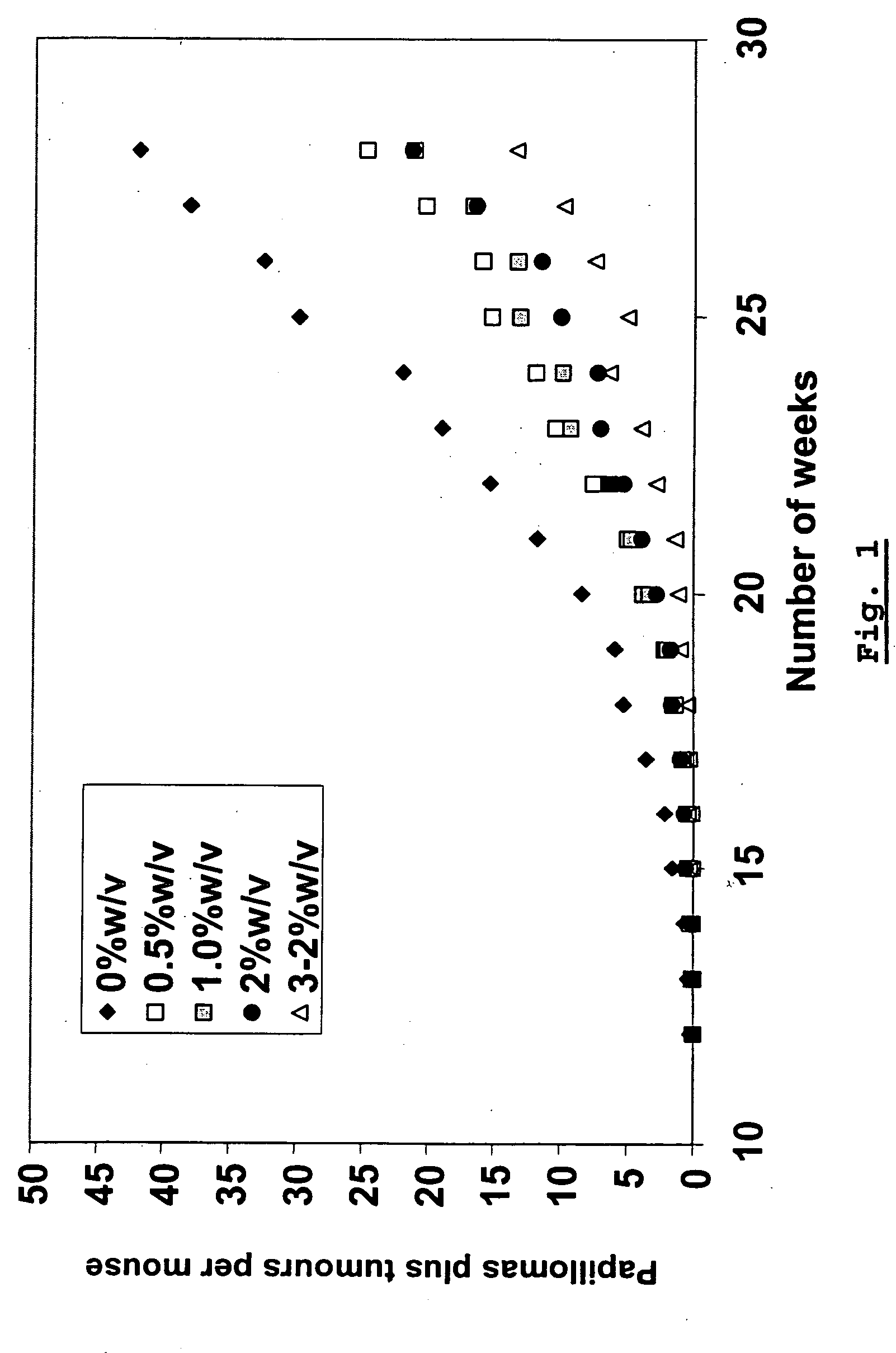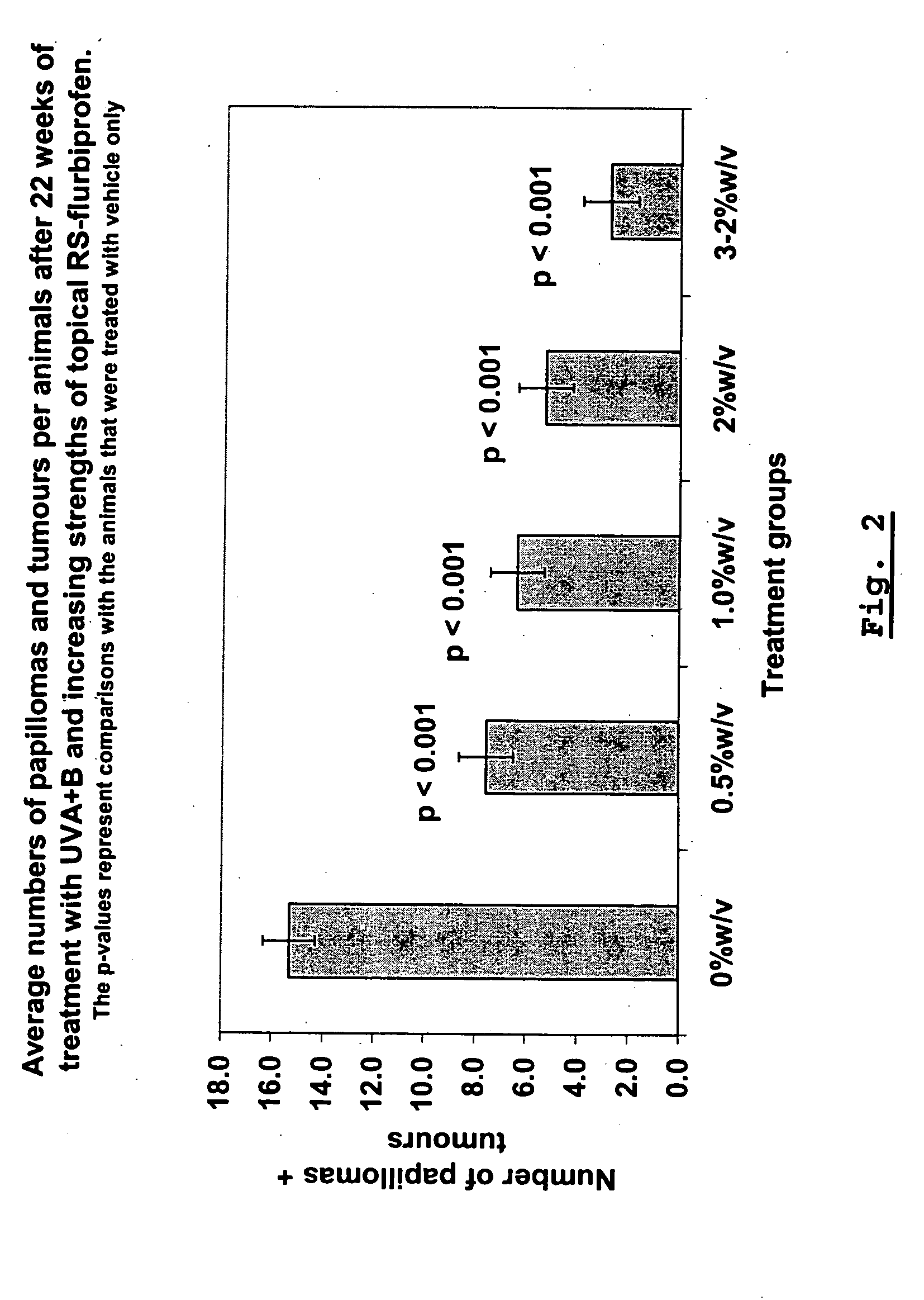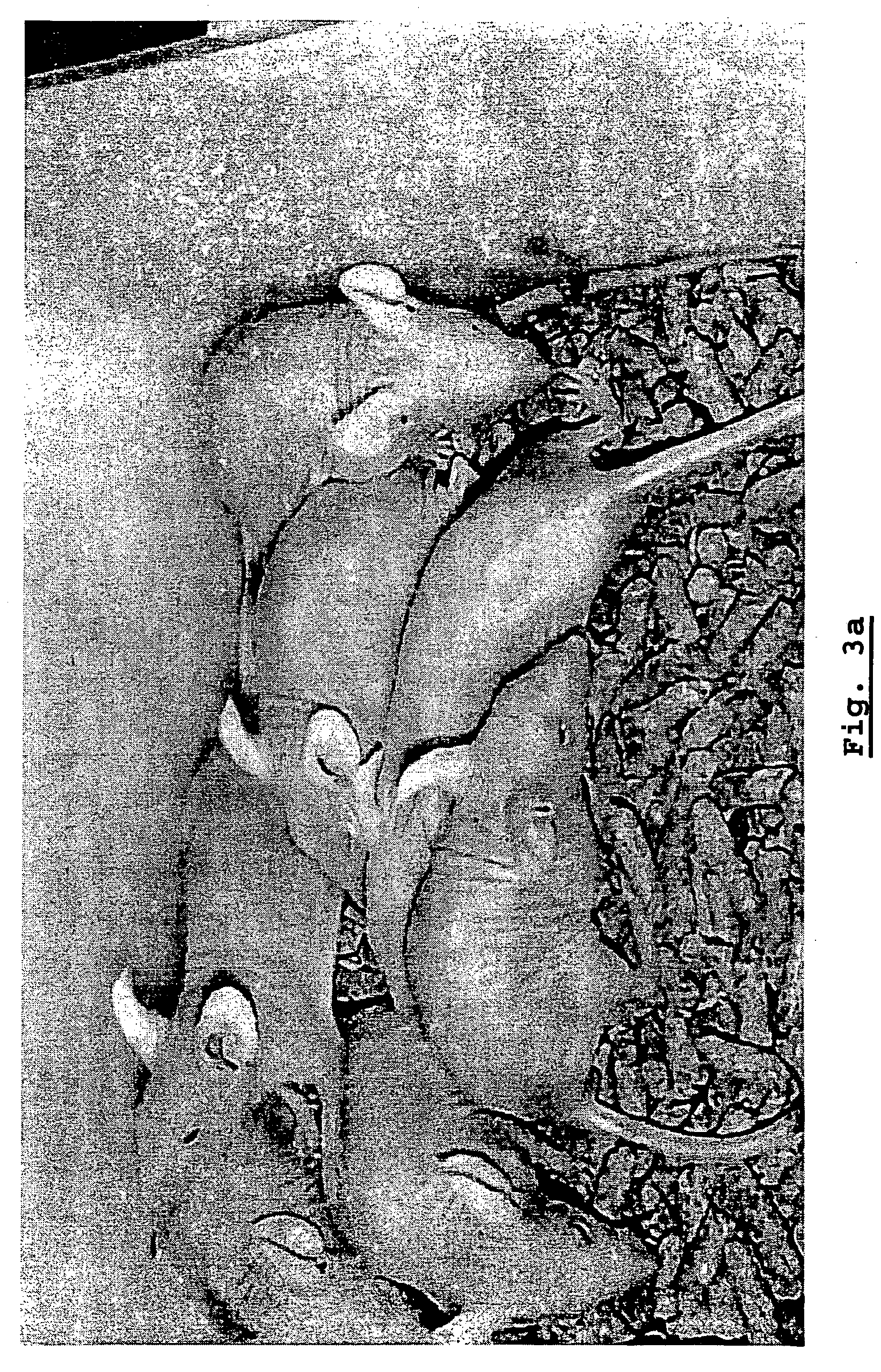NSAID-containing topical formulations that demonstrate chemopreventive activity
a technology of chemoprevention and topical formulations, which is applied in the field of topical medicaments, can solve the problems of generating significant health care costs, presenting a significant health risk throughout the world, and the risk of skin cancer in the future of patients, and achieves the effect of reducing the risk of skin cancer in the futur
- Summary
- Abstract
- Description
- Claims
- Application Information
AI Technical Summary
Benefits of technology
Problems solved by technology
Method used
Image
Examples
example 1
[0075] One suitable water-miscible gel formulation contains the components of table 1 below.
TABLE 1Flurbiprofen 1%Tragacanth2.5%Glycerol 25%Isopropyl alcohol 5%Benzyl alcohol 1%Purified waterto 100%
To prepare this gel, mix the tragacanth with the glycerol and add most of the purified water. Heat to boiling and allow to cool, mixing during the cooling process. Mix the flurbiprofen in the isopropyl alcohol. Combine the water and alcoholic phases and add benzyl alcohol, and add water to volume. In the above formula, it should be understood that ibuprofen, naproxen or any other NSAID as described herein could be used in place of flurbiprofen. Additionally, it should be understood the concentration of the NSAID could be adjusted within pharmaceutically safe and effective ranges. The percent quantities of one or all ingredient could be adjusted to provide an acceptable product. For topical use, the product would be sterilised using a method that is suitable.
example 2
[0076] Table 2 below provides another suitable gel formulation according to the present invention.
TABLE 2Flurbiprofen 1%Glycerol 30%Carbopol 9340.5%Propylene glycol 2%Benzyl alcohol 1%Purified waterto 100%
This gel is prepared in a similar manner to the gel of Example 1.
example 3
[0077] A water-miscible cream such as Aqueous Cream APF would be a suitable emulsion-based formulation to act as a vehicle for flurbiprofen or a related compound. In this example, the formulation provided in table 3 below would apply.
TABLE 3Flurbiprofen1%Emulsifying ointment30%Glycerol5%Phenoxyethanol1%Sterile waterto 100%
In this example, the cream base is prepared by heating the aqueous (glycerol, water, phenoxyethanol) and oil phases (emulsifying ointment) separately to about 60° C., mixing and stirring until cool. The flurbiprofen can be incorporated either by mixing through the oil phase or by levigation with the final cream base.
PUM
| Property | Measurement | Unit |
|---|---|---|
| humidity | aaaaa | aaaaa |
| temperature | aaaaa | aaaaa |
| concentration | aaaaa | aaaaa |
Abstract
Description
Claims
Application Information
 Login to View More
Login to View More - R&D
- Intellectual Property
- Life Sciences
- Materials
- Tech Scout
- Unparalleled Data Quality
- Higher Quality Content
- 60% Fewer Hallucinations
Browse by: Latest US Patents, China's latest patents, Technical Efficacy Thesaurus, Application Domain, Technology Topic, Popular Technical Reports.
© 2025 PatSnap. All rights reserved.Legal|Privacy policy|Modern Slavery Act Transparency Statement|Sitemap|About US| Contact US: help@patsnap.com



